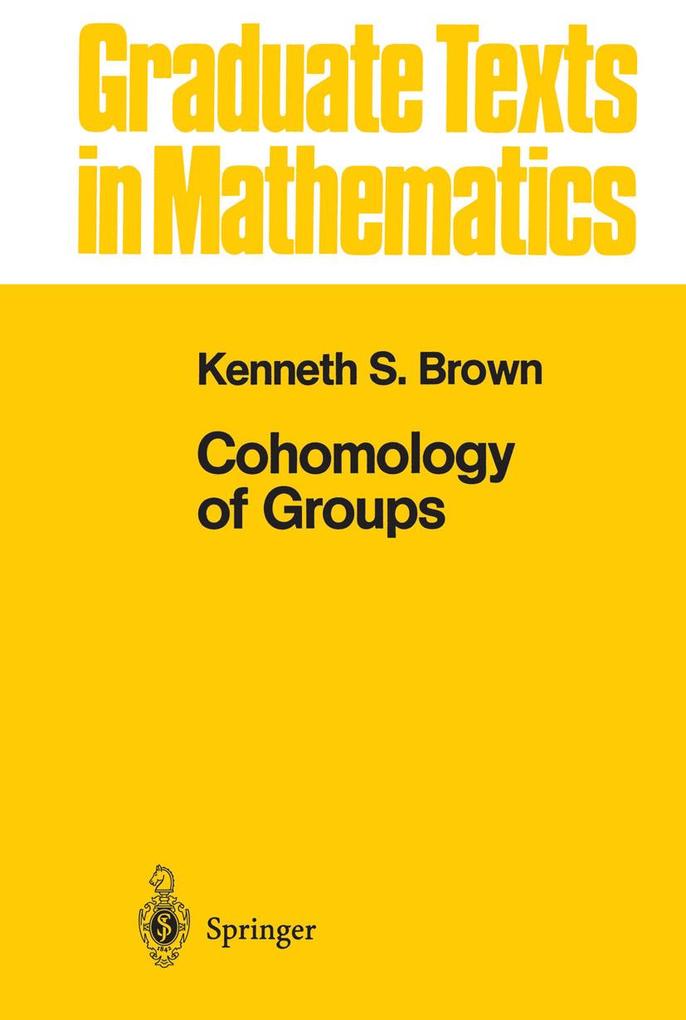As a second year graduate textbook, Cohomology of Groups introduces students to cohomology theory (involving a rich interplay between algebra and topology) with a minimum of prerequisites. No homological algebra is assumed beyond what is normally learned in a first course in algebraic topology. The basics of the subject are given (along with exercises) before the author discusses more specialized topics.
Inhaltsverzeichnis
I Some Homological Algebra. - 0. Review of Chain Complexes. - 1. Free Resolutions. - 2. Group Rings. - 3. G-Modules. - 4. Resolutions of Z Over ZG via Topology. - 5. The Standard Resolution. - 6. Periodic Resolutions via Free Actions on Spheres. - 7. Uniqueness of Resolutions. - 8. Projective Modules. - Appendix. Review of Regular Coverings. - II The Homology of a Group. - 1. Generalities. - 2. Co-invariants. - 3. The Definition of H*G. - 4. Topological Interpretation. - 5. Hopfs Theorems. - 6. Functoriality. - 7. The Homology of Amalgamated Free Products. - Appendix. Trees and Amalgamations. - III Homology and Cohomology with Coefficients. - 0. Preliminaries on ? G and HomG. - 1. Definition of H*(G, M) and H*(G, M). - 2. Tor and Ext. - 3. Extension and Co-extension of Scalars. - 4. Injective Modules. - 5. Induced and Co-induced Modules. - 6. H* and H* as Functors of the Coefficient Module. - 7. Dimension Shifting. - 8. H* and H* as Functors of Two Variables. - 9. The Transfer Map. - 10. Applications of the Transfer. - IV Low Dimensional Cohomology and Group Extensions. - 1. Introduction. - 2. Split Extensions. - 3. The Classification of Extensions with Abelian Kernel. - 4. Application: p-Groups with a Cyclic Subgroup of Index p. - 5. Crossed Modules and H3 (Sketch). - 6. Extensions With Non-Abelian Kernel (Sketch). - V Products. - 1. The Tensor Product of Resolutions. - 2. Cross-products. - 3. Cup and Cap Products. - 4. Composition Products. - 5. The Pontryagin Product. - 6. Application: Calculation of the Homology of an Abelian Group. - VI Cohomology Theory of Finite Groups. - 1. Introduction. - 2. Relative Homological Algebra. - 3. Complete Resolutions. - 4. Definition of ? *. - 5. Properties of ? *. - 6. Composition Products. - 7. A Duality Theorem. - 8. Cohomologically Trivial Modules. - 9. Groups with Periodic Cohomology. - VII Equivariant Homology and Spectral Sequences. - 1. Introduction. - 2. The Spectral Sequence of a Filtered Complex. - 3. Double Complexes. - 4. Example: The Homology of a Union. - 5. Homology of a Group with Coefficients in a Chain Complex. - 6. Example: The Hochschild-Serre Spectral Sequence. - 7. Equivariant Homology. - 8. Computation of d1. - 9. Example: Amalgamations. - 10. Equivariant Tate CohoMology. - VIII Finiteness Conditions. - 1. Introduction. - 2. CohoMological Dimension. - 3. Serre s Theorem. - 4. Resolutions of Finite Type. - 5. Groups of Type FPn. - 6. Groups of Type FF and FL. - 7. Topological Interpretation. - 8. Further Topological Results. - 9. Further Examples. - 10. Duality Groups. - 11. Virtual Notions. - IX Euler Characteristics. - 1. Ranks of Projective Modules: Introduction. - 2. The Hattori-Stallings Rank. - 3. Ranks Over Commutative Rings. - 4. Ranks Over Group Rings; Swan s Theorem. - 5. Consequences of Swan s Theorem. - 6. Euler Characteristics of Groups: The Torsion-Free Case. - 7. Extension to Groups with Torsion. - 8. Euler Characteristics and Number Theory. - 9. Integrality Properties of ? (?). - 10. Proof of Theorem 9. 3; Finite Group Actions. - 11. The Fractional Part of ? (?). -12. Acyclic Covers; Proof of Lemma 11. 2. - 13. The p-Fractional Part of ? (?). - 14. A Formula for ? ? (A). - X Farrell Cohomology Theory. - 1. Introduction. - 2. Complete Resolutions. - 3. Definition and Properties of ? *(?)277. - 4. Equivariant Farrell Cohomology. - 5. Cohomologically Trivial Modules. - 6. Groups with Periodic Cohomology. - 7. ? *(?) and the Ordered Set of Finite Subgroups of ? . - References. - Notation Index.


































